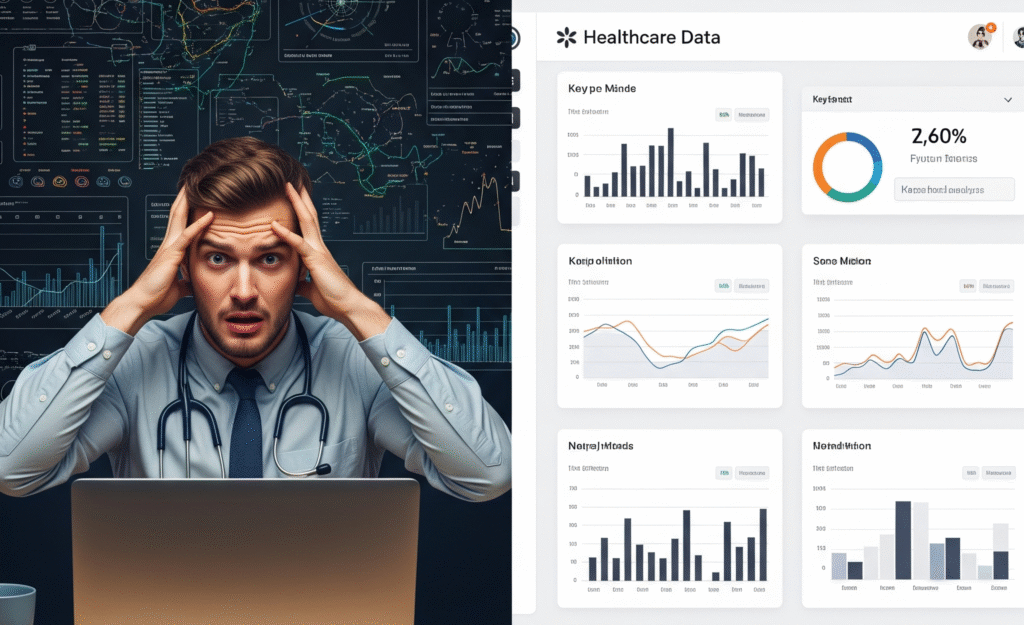For years, I’ve lived and breathed healthcare data, working across complex ecosystems from payers and Managed Care Organizations (MCOs) to Accountable Care Organizations (ACOs). I’ve seen the immense potential of analytics and the dedication of the talented individuals on these teams.
But I’ve also witnessed a profound, often unspoken, disconnect: the brightest analytics team members are frequently isolated from the strategic “why.” They are asked to pull specific reports, build intricate models, and crunch vast datasets, often for years, without a clear understanding of the overall Value-Based Care (VBC) model their work supports, or the precise role their output plays in executive-level decisions.
Discussions about strategic direction, payment model intricacies, and the organization’s overarching VBC goals are typically held in executive boardrooms. Directives then cascade down, translating into specific analytical tasks. The result? A highly capable analyst might deliver flawless numbers, but lack the critical context to turn those numbers into truly valuable insights.
This pervasive challenge – the gap between analytical capability and strategic understanding – is the very reason I started healthvizconsult.com.
The Hidden Problems Undermining Healthcare Analytics & Reporting
My experience in the trenches of payer, MCO, and ACO analytics has revealed recurring pain points that hinder progress in VBC, extending beyond just data quality or tool limitations:
- The Context Void: Analysts Operating in the Dark:
- Highly skilled analytics professionals are often performing their tasks in a vacuum. They understand how to build a report or how to run a model, but not always why that specific piece of data is crucial to a shared savings calculation, or how it directly impacts a strategic decision on network optimization for an MCO.
- The VBC Challenge: When an analyst doesn’t fully grasp the nuances of, say, Capitation vs. Shared Savings, their reporting might be technically correct but miss critical strategic implications, leading to superficial analysis.
- Limited Insights, Not Limited Ability:
- When analysts aren’t fully immersed in the strategic goals of VBC models, their analysis tends to be reactive and descriptive. They can tell you “what happened,” but struggle to pivot to “why it happened” or, more importantly, “what we should do next.” This limits their ability to provide proactive, valuable insights that drive organizational direction.
- The VBC Challenge: A VBC organization needs analysts who can identify emerging risks, propose new intervention strategies, and model the financial impact of clinical changes – tasks that require a deep, contextual understanding of the VBC model.
- The “Build It or Buy It” Conundrum:
- Healthcare organizations constantly face the decision: should we build our VBC reporting capabilities internally, or buy expensive solutions from external vendors?
- The Internal Challenge: When internal analytics teams lack a holistic understanding of the VBC models, or the strategic goals, there’s a fundamental breakdown in cohesion. Collaboration becomes difficult, as individual contributors don’t see how their piece fits into the larger puzzle. This lack of strategic alignment and collaborative capability often makes “building it” internally seem insurmountable.
- The Vendor Advantage: Faced with this internal fragmentation, organizations often opt to “buy” solutions from vendors. Why? Because these vendors do effectively educate their own teams on the entire model, fostering the cohesion and contextual understanding needed to deliver integrated, insightful reporting. They sell not just a tool, but a solution backed by a team that understands the strategic imperative.
- Ineffective Communication: Translating Data to Strategic Action:
- Even if an analyst stumbles upon a critical insight, conveying it effectively to executive leadership who do understand the VBC models, but don’t have time to dig into raw data, becomes a major hurdle. The data needs to tell a compelling, visually clear story that drives strategic action.
My “Aha!” Moment: Bridging the Gap, Empowering the Teams
I’ve been in those very executive discussions, and I’ve worked alongside those incredibly smart analysts. I realized the problem wasn’t a lack of talent, but a lack of strategic education and contextual empowerment for the analytics teams themselves.
This realization led me to create healthvizconsult.com.
My mission here is to bridge that critical gap. I believe that by educating and empowering healthcare analytics teams on the intricacies of VBC models, and by mastering the art and science of strategic data visualization and communication, internal teams can become the invaluable strategic partners they’re meant to be. This empowers organizations to “build it” effectively and truly own their VBC success.
What You Can Expect From This Blog
Through this blog, I will share:
- Deep Dives into VBC Models (for Analysts): Unpacking the strategic “why” behind Capitation, Shared Savings, Bundled Payments, and more, so analysts understand their role in the bigger picture.
- The Nuances of Payer, Provider, MCO, & ACO Analytics: Specific insights into the data challenges and opportunities unique to these VBC drivers.
- Strategic Data Visualization Techniques: How to transform complex healthcare data into clear, compelling, and actionable visual narratives that resonate with executives.
- Bridging the Gap: Methodologies for fostering better collaboration and understanding between analytics teams and strategic leadership.
- Real-world examples (often using simulated data for privacy) of how contextualized analytics and strategic visualization drive tangible improvements in patient outcomes and cost reduction.
I’m here to show you how investing in the holistic understanding of your analytics teams can transform your organization’s VBC journey, putting you in the driver’s seat of insights and truly enabling you to “build it” better than anyone can “buy” it.
Join me on this journey as we transform healthcare data into the strategic asset it was always meant to be.
